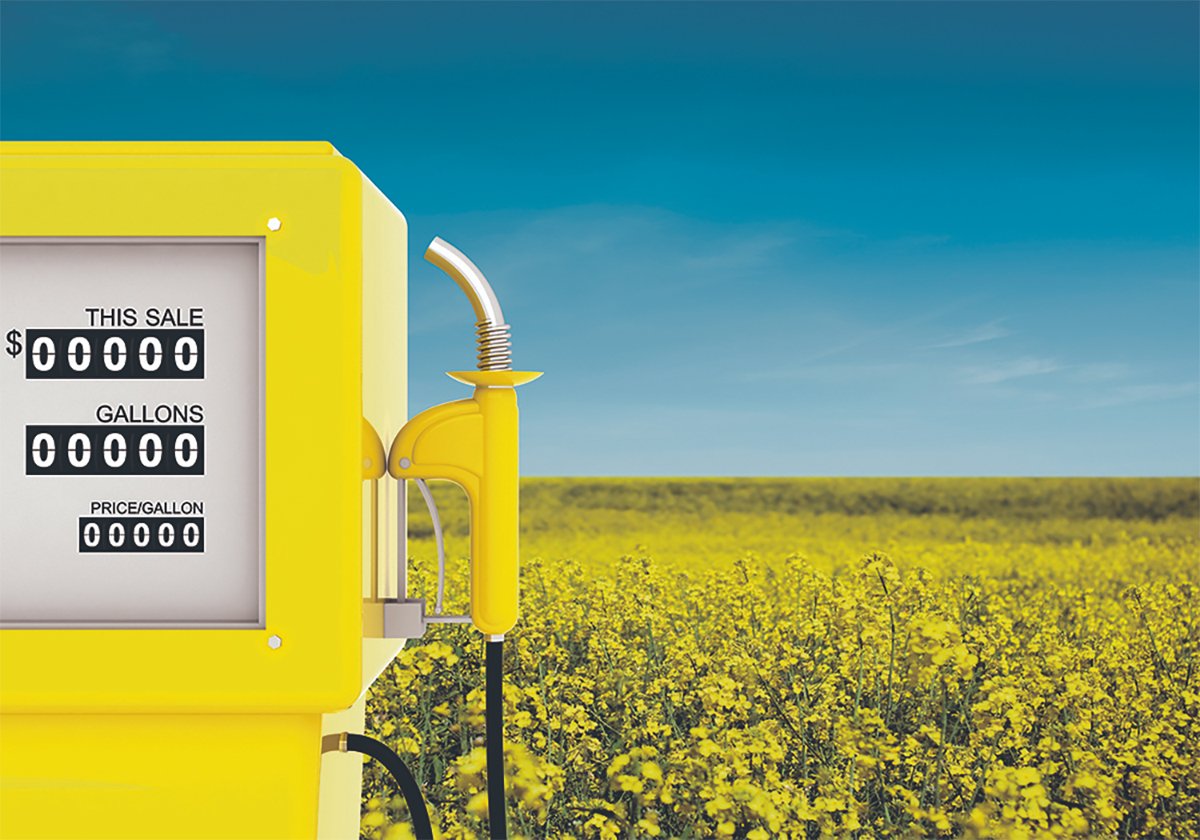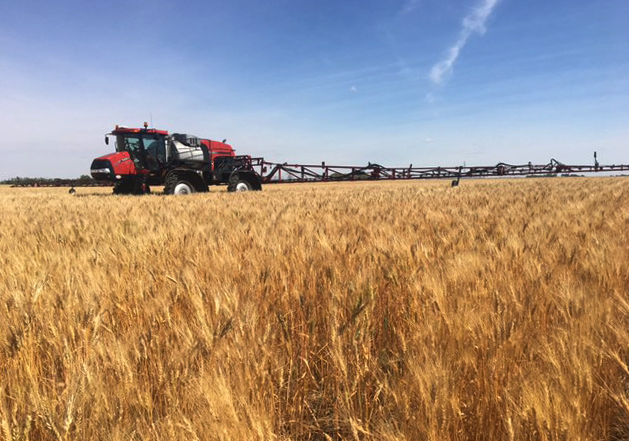Grain farming is radically different from the way it was in November 1994 when I started reporting for this newspaper.
Back then, there were a couple of hundred thousand farmers working full-time growing grain on the Prairies. Most belonged to and delivered to elevators owned by the giant farmer co-operatives, such as Saskatchewan Wheat Pool, which owned the Western Producer.
The system was also government-dominated, with bodies such as the Canadian Wheat Board and the Canadian Grain Commission standing atop a hierarchical structure with much more command-and-control management. Grain transportation subsidies and regulations glued it all together.
Read Also

Biofuel sector happy with federal budget
Advanced Biofuels Canada says new Biofuel Production Incentive is a lifeline until CFR amendments are in place.
Today the system feels flatter, much more bottom up than top down, although farmers today complain about the same lack of power versus the grain handlers and exporters, the government and the unions, and the railways that they felt 30 years ago. Do farmers today feel more in control of their destinies than they did? That’s hard to tell.
The weather is much less predictable and crop and animal diseases seem more virulent, but the crop varieties and livestock lines are much better. In the end, it’s still a yearly crapshoot.
In so many ways, western Canadian farming has this combination of utterly different and completely the same stitched into its soul. I suppose that’s evolution: some features are shed, others become modified and new ones arise as the entity adapts to ongoing and fresh realities. As I look back, I see some issues resolved, while others are as up in the air as 30 years ago.
Farms are equally different and similar as the systems built upon their crops and livestock. Full-time farms are much bigger, less diversified and more managerially complex. It’s hard to find a mixed crops-and-livestock farm in most areas, with grain farmers shedding their herds and livestock producers doubling down on single-species operations.
What’s been resolved and what hasn’t?
Resolved
I feel safe saying the family-versus-corporate farm question has been resolved: the incorporated family farm has become the basic Prairie grain and cattle farm. However legally organized, farms based upon an extended family are just as dominant now as throughout the 20th century. Dad might no longer be the sole patriarch, but successful non-family-based farms are few and far between, and those that exist might not survive the retirements of founders and original shareholders.
Farming is no path to easy riches, so I don’t think a big grain farm or cattle operation will ever be a natural thing to structure as a non-family private or publicly traded company. Like it or not, only a family is willing to make the sacrifices and take the losses that comes with most types of farming.
The government role in grain and cattle production also seems mostly resolved. The government has left the building, leaving production and almost all commercial decisions in the hands of farmers and the agriculture industry.
Government has stepped back from domination and control to one of supportive regulation and insurance-like support. (Don’t groan. I mean “supportive” in terms of being mostly passive and minor, filling in gaps where private players won’t go.)
Are farmers a social class within society or businesses and an industry? That’s been resolved and is in the process of being accepted by farmers and the public.
Farming is a business, and farmers have mostly lost the view of themselves and from the public as being a social class similar to the urban working class.
In 1994, that was definitely not the case. Farmers still seemed like the bedrock of provinces such as Saskatchewan, Alberta and Manitoba. Today, even though many farmers and urbanites have fond feelings about caricatured images of crop farmers and cowboys, few farmers expect the government to bail them out in (non-disaster) bad times and few in the public would spend a red cent of tax dollars to save the few remaining red barns.
In Quebec, farmers appear to view themselves as a collective entity, working well together across the various commodities and marketing systems in which they operate. In Western Canada, we don’t do that.
Beef producers are notoriously independent and ornery. Supply-managed farmers tend to think about their own industries, and that’s about it. Grain farmers spar across commodities, farm sizes and production styles, tending to find more differences among themselves than commonalities.
Some bewail this lack of collective identity among Prairie producers. I don’t. It’s just the way people are here, and it has advantages and disadvantages.
Back in the mid-1990s, farmers had a collective identity and a feeling that their individual weaknesses could be countered with collective strength. Now few think like that. Today, strong individuals work together to create power within unbalanced systems.
Individual farmers will work together as a “sector,” and they’ll drop off food for bereaved neighbours and join in Canadian Foodgrains Bank growing projects, but when it comes to individuals’ success or failure as a farm, that’s in that individual’s hands, and nobody thinks the system is broken or the government needs to step in if an individual farm breaks.
That’s been resolved. It’s sink or swim today, and that’s why we have the most efficient and productive grain, cattle and pork producers in the world.
Unresolved
Still, much remains or has become unresolved.
Who should be allowed to own farmland? And how much? It wasn’t much of an issue in 1994. Farmland was close to useless for investment purposes unless you were going to farm it. It was a cheap commodity in a world that was glutted.
Now, farmland has become a hot commodity with pension plans, hedge funds, wealthy investors and governments striding into the space.
Canadian provinces have different farmland ownership rules, so the ability of “outside money” to take possession of farmland is different across the country. However, individual Canadian investors and funds have made small but significant inroads into the farmland ownership base. How far should that go?
In some U.S. states, non-farmers own most of the land, and the average farmer leases most of “his” land. Should that happen here?
What about size? Should big farms and Hutterite colonies be allowed to outbid their neighbours for bigger and bigger farms? I’ve been hearing people argue about that since I started here.
Is there a public interest in regulating farmland ownership at all?
That’s unresolved today. I’m guessing it will become either a major issue in years to come or be deregulated and drop off the radar. The CWB issue was like that. The territory was fought over like Flanders fields and then mostly forgotten once one side won.
Something I thought had been resolved might be coming undone. The de-diversification that has been occurring since the 1990s, with a seemingly irreversible move toward bigger and bigger and simpler and simpler field operations and livestock management might be reversed by the loss of some of our major tools.
Glyphosate, as my colleague Robert Arnason reported last week, is seen by many agronomy experts as heading toward extinction as a control for many of the most troublesome weeds. That chemistry has allowed much of the simplification we have embraced in Prairie farming, from short rotations to one-size-fits-all machinery and field design to everything else.
If some of the basics of western Canadian farming get broken, how do we fix it when half the tools in the toolbox don’t work?
Whither supply management? Right now, the political support for the system seems rock solid from both right and left wings of the political spectrum, with fervent support from most of the farmers inside the system, but will that last?
As supply-managed farms consolidate, as is occurring, albeit more gradually than in open market crops, beef and pigs, do the farmers and the system lose their ability to win support from the public and political parties. That happened to grain and hog farmers decades ago. It could happen in supply management. It’s unresolved.
The evolution of western Canadian farming has been fascinating for me to witness from my reporter’s chair. I’m looking forward to seeing how these issues are resolved or remain unresolved, and to keep reporting on that.
You might begin seeing my slightly altered byline in the Western Producer in the coming years. I’ll leave that cryptic hint for you.
Allow me to depart this Hedge Row space with some words from one of my favourite writers, Bilbo Baggins: “This is the end. I am going. I am leaving now. Goodbye.”
















